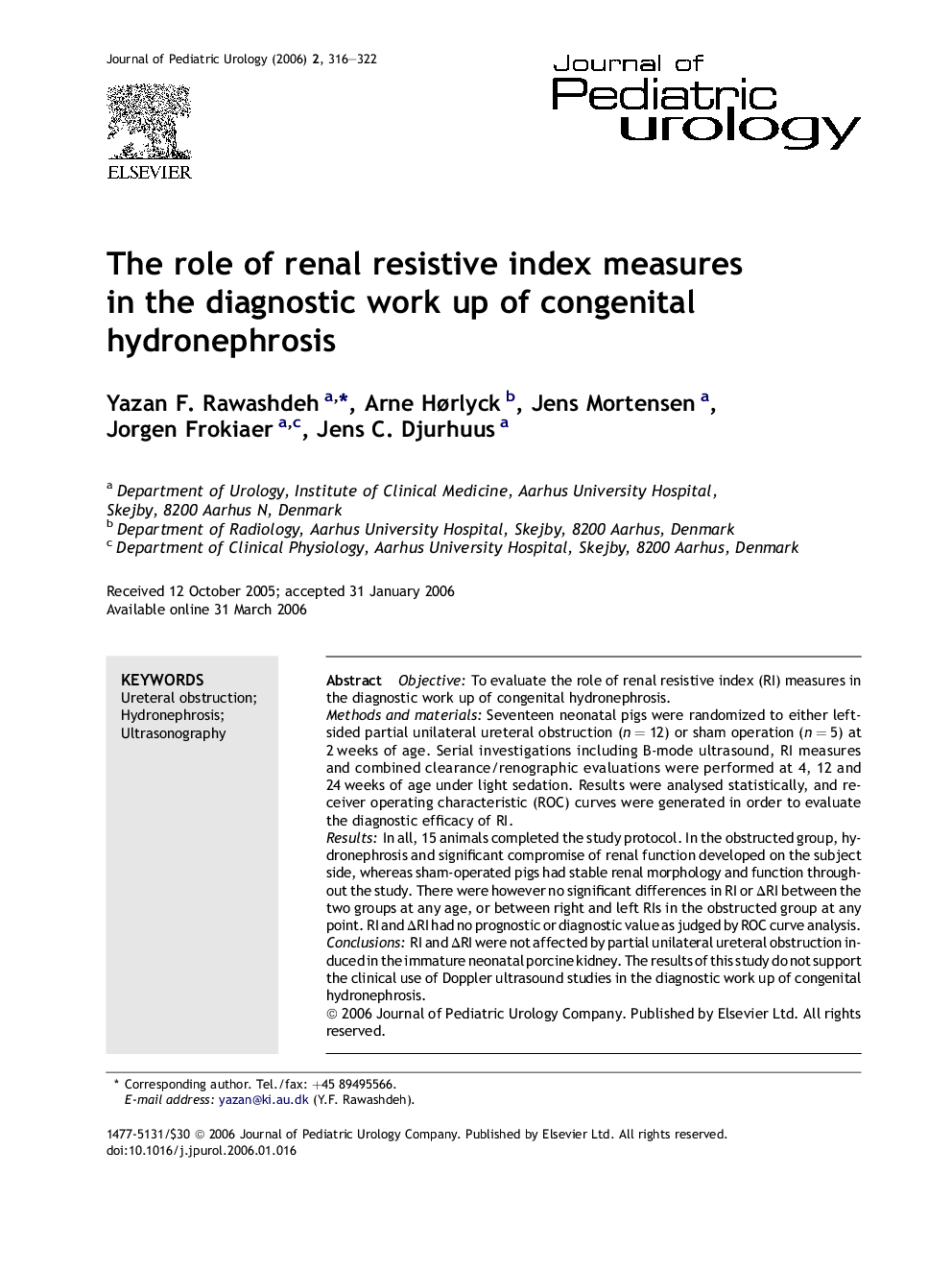| کد مقاله | کد نشریه | سال انتشار | مقاله انگلیسی | نسخه تمام متن |
|---|---|---|---|---|
| 4164000 | 1274322 | 2006 | 7 صفحه PDF | دانلود رایگان |

ObjectiveTo evaluate the role of renal resistive index (RI) measures in the diagnostic work up of congenital hydronephrosis.Methods and materialsSeventeen neonatal pigs were randomized to either left-sided partial unilateral ureteral obstruction (n = 12) or sham operation (n = 5) at 2 weeks of age. Serial investigations including B-mode ultrasound, RI measures and combined clearance/renographic evaluations were performed at 4, 12 and 24 weeks of age under light sedation. Results were analysed statistically, and receiver operating characteristic (ROC) curves were generated in order to evaluate the diagnostic efficacy of RI.ResultsIn all, 15 animals completed the study protocol. In the obstructed group, hydronephrosis and significant compromise of renal function developed on the subject side, whereas sham-operated pigs had stable renal morphology and function throughout the study. There were however no significant differences in RI or ΔRI between the two groups at any age, or between right and left RIs in the obstructed group at any point. RI and ΔRI had no prognostic or diagnostic value as judged by ROC curve analysis.ConclusionsRI and ΔRI were not affected by partial unilateral ureteral obstruction induced in the immature neonatal porcine kidney. The results of this study do not support the clinical use of Doppler ultrasound studies in the diagnostic work up of congenital hydronephrosis.
Journal: Journal of Pediatric Urology - Volume 2, Issue 4, August 2006, Pages 316–322